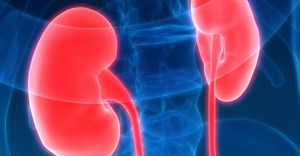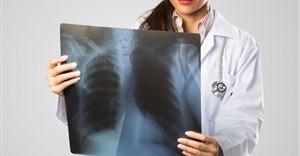Subscribe & Follow
Trending

 Woolworths sees over 20% drop in annual earningsAby Jose Koilparambil
Woolworths sees over 20% drop in annual earningsAby Jose Koilparambil



Two young adults diagnosed with skin cancer every day
The charity's 2011 SunSmart campaign, launched Wednesday 6 April 2011, reveals an alarming tripling in melanoma rates among British 15-34 year olds since the late seventies.
In the late seventies, there were around 290 cases of melanoma among 15-34 year-olds. Now more than 900 young Britons are being diagnosed with the disease each year - more than two a day.*
Thirty years ago, there were 1.8 cases of melanoma per 100,000 people in this age group. Now there are 5.9 cases per 100,000.
And the numbers continue to increase. Latest available figures show that the total number of cases of malignant melanoma for all ages increased from 10,800 in 2007 to 11,700 in 2008 - a rise of 8.5%.
Dangers of sunburn
Caroline Cerny, Cancer Research UK's SunSmart campaign manager, said: "It's very worrying to see that the number of young adults being diagnosed with this potentially fatal disease has risen so dramatically, especially since cancer is typically a disease that affects older people.
"With summer approaching after such a harsh winter, everyone is looking forward to enjoying some sunshine. But it's more important than ever to be aware of the dangers of getting sunburnt.
"Nor are sunbeds a safe alternative to tanning. In fact using a sunbed before the age of 35 can increase your risk of melanoma by 75%.
"Young women in particular need to take care since they are more than twice as likely to be diagnosed with melanoma than young men. The good news is that the majority of cases could be prevented by making sure you don't get sunburnt."**
Lindsey Coane, 27, an architectural assistant from Preston, was diagnosed with malignant melanoma on her leg at just 21 while she was at university in Liverpool.
"I used sunbeds for six to nine minutes at a time every week for nearly two years while at university. I was really keen to have a tan and used to get sunburnt while on holiday with my friends. I'm convinced that both these things caused my malignant melanoma," she said.
"I'm very lucky that the cancer was caught when it was. But a lot of skin and tissue still needed to be taken out of my leg, cutting through some of my nerves which left my leg partially numb.
"I had to learn to walk again and then run. The first event I took part in was Race for Life - it was such a big achievement for me. As far as I'm concerned now, pale skin is interesting.
"I am very fair and I only have to be in the sun for a few minutes to burn, which is why it was so silly of me to go on sunbeds."
Reduce the risks
Sara Hiom, director of health information at Cancer Research UK, said: "While some sunshine is good for us, going red and burning can be dangerous.
"The most important thing people can do to reduce their chances of developing skin cancer is to make sure they don't get red or burn. And the best way to do that is to get to know your skin and how long you can safely stay in the sun, and also avoid sunbeds.
"Sunburn means that UV rays have penetrated the skin cells causing damage which builds up over time and increases the risk of skin cancer.
"The explosion in melanoma rates we are seeing now reflects people's tanning behaviour in the past and the desire to sport a suntan - a trend which began in the seventies with the dawn of cheap package holidays.
"But all too often holiday-makers thought getting sunburnt was part of the process of getting a tan.
"Everyone is different so know your skin type - if you are fair, freckly, have lots of moles or a family history of skin cancer then you need to take extra care in the sun.
"Our message is clear - enjoy the sun safely and protect yourself from sunburn."
* Rates and number of cases of melanoma based on average rates between 1977-79 and 2006-08. Cancer is the biggest cause of death in the UK. But looking at number of cases for specific types in particular age groups, can give relatively low numbers. This is often more of an issue in younger age groups as cancer is predominately a disease of the elderly. From year to year there will be a certain amount of random variation that occurs naturally and this variation is increased when considering types with smaller numbers. To ensure our statistics are as robust as possible we use three year averages to reduce this natural variation in the data.
** The rate of young women (15-34 year-old) in Britain being diagnosed with malignant melanoma now is 8.0 women per 100,000 (607 cases). This compared to 3.9 men per 100,000 (306) for the same age group. These rates and cases are based on a three year average from 06-08. Over a quarter of the cases (256 out of 913) diagnosed in young adults were women between the ages of 30-34.
Article published courtesy of Cancer Research UK.







